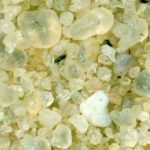Site of biggest ever meteorite collision in the UK discovered0
- Ancient Archeology, From Around the Web, Space
- June 10, 2019
Scientists believe they have discovered the site of the biggest meteorite impact ever to hit the British Isles.

Scientists believe they have discovered the site of the biggest meteorite impact ever to hit the British Isles.

An international team of paleontologists has discovered 1,000- to 900-million-year-old microfossils of a fungus in estuarine shale of the Grassy Bay Formation in Arctic Canada. These multicellular organic-walled microfossils are more than half a billion years older than previously reported occurrences of fungi.

There’s less than a 1% chance Australopithecus sediba led to the genus Homo.

Bristol distances itself from academic who claims to have solved century-old mystery

About 29 million years ago, the sands of the western Egyptian desert melted and created tiny pieces of canary yellow glass — some of which ended up decorating King Tut’s pectoral (chest ornament).

The first humans who settled in Scandinavia more than 10,000 years ago left their DNA behind in ancient chewing gum, masticated lumps made from birch bark pitch. This is shown in a new study conducted at Stockholm University and published in Communications Biology.

A Curtin University researcher has solved a nearly 100-year-old riddle by discovering that glass found in the Egyptian desert was created by a meteorite impact, rather than atmospheric airburst, in findings that have implications for understanding the threat posed by asteroids.

About 14,000 years ago, a party of five barefoot people — two adults, one preteen and two children — walked and even crawled through a dark passageway in a cave, according to a new study that analyzed the hand- and footprints these individuals left behind.

Deep within the Great Bear Rainforest, on the remote Triquet Island off Canada’s western coast, a group of archeologists made the discovery of a lifetime. They began digging without any expectations, but their incredible finding would ultimately bring an ancient folktale to life.

Most Europeans descend from a combination of European hunter-gatherers, Anatolian early farmers, and Steppe herders. But only European speakers of Uralic languages like Estonian and Finnish also have DNA from ancient Siberians. Now, with the help of ancient DNA samples, researchers reporting in Current Biology on May 9 suggest that these languages may have arrived from Siberia by the beginning of the Iron Age, about 2,500 years ago, rather than evolving in Northern Europe.



